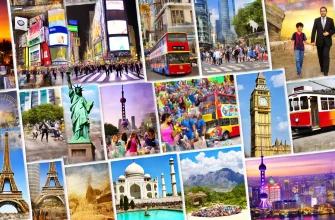Cultural legacy is the sum of tangible artifacts and intangible attributes passed down from our ancestors, preserved in our times, and gifted to our descendants. It spans structures, landmarks, terrains, literature, art, as well as customs, dialects, and wisdom. A prominent guardian of such heritage is the United Nations Educational, Scientific and Cultural Organization (UNESCO), which recognizes World Heritage Sites of exceptional cultural or natural value to the collective legacy of humankind. This text examines the pivotal role of UNESCO World Heritage Sites, highlights some exemplary instances, and addresses the hurdles in safeguarding these precious relics.
The Vital Role of UNESCO World Heritage Sites
These sites are chosen for their exceptional cultural, historical, or scientific relevance, among other qualities. Criteria for selection range from showcasing the ingenuity of human creativity to cultural importance, historical significance, and aesthetical appeal. The goal is to conserve these sites for posterity while maintaining public accessibility.
Significance to Culture: These landmarks are reservoirs of history and cultural identity, revealing insights into the customs and creative expressions of ancient societies. They often stand as emblems of pride for local inhabitants.
Educational Merit: These sites foster learning, fostering a deeper appreciation for the diverse tapestries of human culture and bygone eras. They serve as dynamic classrooms, where history is experienced firsthand.
Economic and Tourism Advantages: Recognition as a World Heritage Site can stimulate tourism, yielding financial gains for local communities. Such benefits can bolster conservation and community progress.
Preservation Efforts: This designation plays a crucial role in safeguarding sites from risks like urban encroachment, natural calamities, and strife. UNESCO offers both expertise and financial aid for their preservation and rehabilitation.
A Tour of Distinguished UNESCO World Heritage Sites
With over 1,100 such sites globally, each bears its unique narrative and importance. Here are some of the most illustrious:
Machu Picchu, Peru: Perched in the Andes, this ancient Incan city from the 15th century reveals the Incan mastery of stone construction and spiritual customs within a stunning landscape.
Great Wall of China, China: An ancient defense marvel, it spans over 13,000 miles and stands as a symbol of Chinese historical resilience and architectural sophistication.
Pyramids of Giza, Egypt: The iconic and ancient Pyramids, including the Great Pyramid, showcase the architectural acumen of Egyptians and their beliefs in life after death, serving as mausoleums for pharaohs.
Taj Mahal, India: A Mughal architectural jewel built from white marble, it represents eternal devotion and is renowned for its beauty and elaborate designs.
Acropolis of Athens, Greece: A beacon of ancient Greek culture, the Acropolis and its Parthenon sit atop a rocky outcrop, offering sweeping views and insight into classical architectural prowess.
Serengeti National Park, Tanzania: A natural site famed for its rich biodiversity and the grand annual migration of wildlife, emphasizing the need for conservation of natural environments.
Historic Center of Rome, Italy: Encompassing the Colosseum, Roman Forum, and Vatican City, Rome’s center is a repository of art, history, and architecture that narrates stories from ancient Rome.
Obstacles in Safeguarding UNESCO World Heritage Sites
Even with their protective status, these sites confront various challenges:
Environmental Hazards: Climate change, natural catastrophes, and pollution are grave threats. Changes in climate and weather patterns can inflict permanent harm.
Urban Expansion: The push of urban growth can jeopardize the authentic state of heritage sites. Finding a balance between modern needs and conservation is a complex task.
Tourism Strain: Tourism can be a double-edged sword, as excessive visitation can cause damage and resource depletion. Sustainable tourism management is key to site longevity.
Conflict and Desecration: Unrest, conflict, and intentional harm can result in the ruin of cultural sites. Safeguarding these locations in areas of instability is highly challenging.
Resource Limitations: Consistent funding and specialized knowledge are crucial for site upkeep and repair. Scarce resources can hinder these efforts, especially in less affluent nations.
Conclusion
UNESCO World Heritage Sites are irreplaceable assets that embody humanity’s cultural and natural patrimony. They provide educational value, economic incentives, and a connection to our collective past. Yet, protecting these locations against environmental, developmental, and societal pressures calls for dedicated action and sustainable approaches. By cherishing and defending these sites, we ensure that they will continue to enlighten and inspire generations to come.







